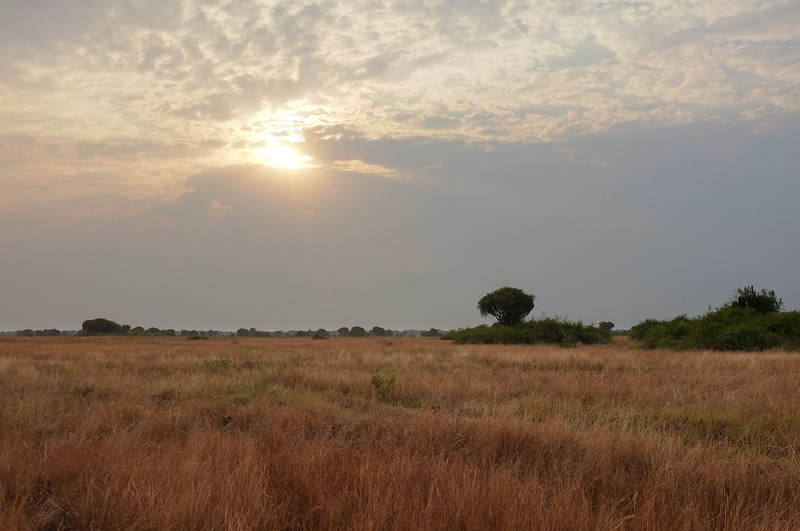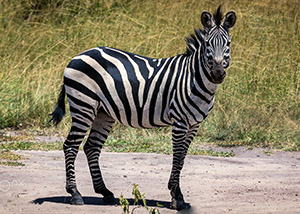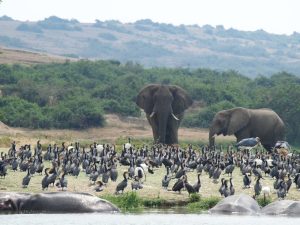Queen Elizabeth National Park
Queen Elizabeth National Park (QENP) is one of Uganda’s most diverse and picturesque protected areas. Situated in the western part of the country, this park is renowned for its rich wildlife, stunning landscapes, and unique ecological features. Whether you’re a seasoned safari-goer or a first-time visitor, this ultimate guide will help you make the most of your experience in Queen Elizabeth National Park.
Overview of Queen Elizabeth National Park
Location: Western Uganda, near the border with the Democratic Republic of Congo.
Size: Approximately 1,978 square kilometers (764 square miles).
Established: 1952.
Unique Features:
- Diverse Ecosystems: The park encompasses savannahs, wetlands, forests, and crater lakes.
- Scenic Landscapes: The park is home to the dramatic Kyambura Gorge, the crater lakes of the Albertine Rift, and the serene Kazinga Channel.
Wildlife and Biodiversity
Big Five: Queen Elizabeth National Park is known for its rich wildlife, including three of the Big Five (lion, leopard, and elephant) and a variety of other species.
- Elephants: Often seen in the park’s savannahs and near water sources.
- Lions: Predominantly found in the Ishasha sector of the park, known for its tree-climbing lions.
- Leopards: Solitary and elusive, leopards can be spotted in various parts of the park, especially during evening safaris.
- Buffaloes: Large herds are commonly seen grazing in the grasslands.
- Hippos: Easily spotted in the Kazinga Channel and other water bodies.
Other Notable Species:
- Uganda Kob: The park is famous for its large populations of this antelope.
- Hyenas: Spotted and striped hyenas are present in the park.
- Warthogs: Frequently seen in open areas and savannahs.
- Birds: Over 600 bird species, including the rare shoebill stork, are found in the park.
3. Key Attractions
Kazinga Channel: A natural waterway connecting Lake Edward and Lake George, the channel is ideal for boat safaris. It offers excellent opportunities to see hippos, crocodiles, and a variety of bird species.
Ishasha Sector: Renowned for its tree-climbing lions, this sector of the park provides a unique safari experience. The lions are known for their unusual behavior of climbing and resting in trees.
Kyambura Gorge: Known as the “Valley of Apes,” Kyambura Gorge is a lush, forested area where you can track chimpanzees and explore a different ecosystem within the park.
Crater Lakes: The park features numerous crater lakes formed by volcanic activity. These picturesque lakes, such as Lake Katwe and Lake Bunyampaka, add to the park’s scenic beauty.
Maramagambo Forest: A dense forest offering guided nature walks, bird watching, and the chance to see forest-dwelling wildlife and primates.
Activities
Game Drives: Explore the park’s diverse landscapes and wildlife on guided game drives. The different sectors of the park offer varying wildlife sightings and experiences.
Boat Safaris: Enjoy a boat cruise on the Kazinga Channel to observe hippos, crocodiles, and numerous bird species up close. It’s a relaxing way to experience the park’s water-based wildlife.
Chimpanzee Trekking: Trek through Kyambura Gorge or the neighboring Kalinzu Forest to track and observe chimpanzees in their natural habitat.
Bird Watching: With over 600 species, Queen Elizabeth National Park is a birdwatcher’s paradise. Guided birding tours can help you spot both common and rare species.
Nature Walks: Take guided walks through Maramagambo Forest or along the park’s scenic trails to experience the park’s flora and fauna from a different perspective.
Cultural Tours: Engage with local communities near the park to learn about their traditions, cultures, and ways of life. Some lodges offer cultural experiences and interactions with indigenous groups.
Accommodation
Luxury Lodges: High-end lodges offer comfort and stunning views, such as:
- Mweya Safari Lodge: Located on the Mweya Peninsula with views of the Kazinga Channel.
- Elephant Plains Lodge: Offers luxury accommodations and excellent access to game drives.
Mid-Range Lodges: Comfortable lodges with good amenities, including:
- Queen Elizabeth Bush Lodge: Offers tented accommodation with a close-to-nature experience.
- Ishasha Wilderness Camp: Situated in the Ishasha sector, providing an authentic safari experience.
Budget Options: Affordable campsites and lodges, including:
- Kingfisher Lodge: A budget-friendly option with basic facilities and good access to the park.
- Institute of Ecology Camp: Offers simple camping facilities at a lower cost.
Travel Tips
Best Time to Visit: The dry seasons (June to September and December to February) are ideal for game viewing and boat safaris. The rainy seasons (March to May and October to November) offer lush landscapes and fewer tourists but can result in muddy conditions.
What to Pack: Lightweight, breathable clothing, comfortable walking shoes, binoculars for wildlife viewing, insect repellent, and sunscreen are essential. Bring rain gear if traveling during the rainy season.
Health and Safety: Ensure you have the necessary vaccinations and malaria prophylaxis. Follow park guidelines and safety instructions, especially during wildlife encounters.
Permits and Reservations: Book permits for chimpanzee trekking and accommodations well in advance, particularly during peak tourist seasons.
Conclusion
Queen Elizabeth National Park is a treasure trove of wildlife and natural beauty, offering diverse safari experiences, stunning landscapes, and rich biodiversity. Whether you’re embarking on a game drive, enjoying a boat safari, or tracking chimpanzees, the park promises an unforgettable adventure in one of Uganda’s most captivating destinations. Plan your visit to experience the best of what this remarkable park has to offer.




